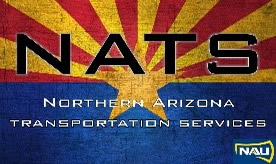Project Information
Project Constraints
The Kendrick Street Bicycle Boulevard project was constrained by several factors including working within existing
right-of-way, keeping project costs and implementation costs as low as possible, and minimizing impact to local
residents. The design specifications and geometric design changes were constrained to the existing right-of-way
as there is no additional right-of-way available and any acquisition of such land would prove far too expensive for
the aim of this project. Additionally, converting Kendrick Street from its existing conditions to a bicycle boulevard
needs to be accomplished in the most economically efficient manner possible. further project constraints can be
found in the final report document.
Design Alternatives
The designers of Northern Arizona Transportation Services formulated and evaluated three design alternatives. The
alternatives were constructed based on guidance provided by the NACTO design guide and MUTCD.
Alternative 1
consists of two 7 foot parking lanes, two 10 foot travel lanes, and 1.5 foot buffer lanes between the parking land and
travel lane. Buffered lane are allowed under MUTCD guidelines for buffered preferential lanes.
Alternative 2
This alternatives has designated 5 foot bicycle lanes, two 10 foot travel lanes, and a 7 foot parking lane on one side
of the street. In addition, the NACTO guide specifies that the buffer lane can take up part of the bike lane. Typically,
6 foot bicycle lanes are preferred, but the smallest cross sectional width of Kendrick Street (37 feet) does not allow
for this.
Alternative 3
this alternative is the simplest of all alternatives. It consists of two 7 foot parking lanes and two travel lanes without
a centerline stripe and a total 23 foot cross section.
Selection of Chosen Alternative
The decision matrix used for the selection of the chosen alternative is shown below. Residential impact and
comfort level are represented by ranking scales from 0 to 5. For residential impact, 0 represents no residential
impact and 5 represents extreme residential impact. A major goal of this project was to minimize residential impact
and therefore all three alternatives scored very well.
Therefore, the preferred alternative, alternative 3, was chosen because it not only scored the highest among NACTO recommended characteristics, but it is also the most cost effective design. Alternative 3 does not include bike lanes,
has an unmarked 23 feet travel way, and delineates parking spaces. The designer chose to omit bike lanes
because they indicate that cyclists should only use the designated space. Bicycle boulevards should be inviting for
all users and allow them to take the whole lane. Unique lane markings will provide guidance to motorists and
cyclists at to equal preference.
More Data related to the Project


